Every year, without fail, everyone says this has been the craziest bubble season ever, or that the committee was faced with its greatest challenge yet. These are the verbal rituals for March in general and for Selection Sunday in particular. We will say these same things again one year from now.
Only this year we may actually have a point. It is time for our annual viewers guide to the selection show here at Bubble Watch. We can begin our preface to the big reveal by saying simply: Fasten your seat belts -- it's going to be a bumpy night (or late afternoon depending on your location).
With both Georgetown and Oregon State stealing bids from the table, the cut line was moved down two spots. If Cincinnati upsets Houston in the American title game, that line will move down one more spot.
According to the very latest conventional wisdom of the mock-bracketing nation, here are how the "should be in" and the top "work to do" teams break down into tiers:
Comfortable: Maryland, VCU, Michigan State
Why, this looks like our entire "should be in" population. Apparently, those lines were drawn with care. Well done, Bubble Watch!
Reasonably safe, we think: Louisville and UCLA
This is the very top of the "work to do" population. Perhaps the committee will drop a bombshell and leave one or both teams out of the bracket. If that happens, however, it will be one wacky occurrence. You have permission to use "shock" and "stun" in this event.
Legitimately nervous: Syracuse
Because, after all, it's Syracuse and this is March. With the transition from "reasonably safe" to "legitimately nervous," we've crossed a significant boundary. The consensus is the Orange will receive a bid, but, according to the Sunday afternoon conventional wisdom, it would not be shocking or stunning if Jim Boeheim's team were left out. More like, "wow" or "interesting."
More nervous than Syracuse: Drake
Another significant boundary crossed. While the most likely scenario is that the Bulldogs will go dancing, there are people who are good at this who say otherwise. With DU, the question is close and suspenseful.
Absolutely watching the American title game: Wichita State and Utah State
By the time we reach the Shockers and Aggies, we are looking at more or less true 50-50 propositions. Georgetown and Oregon State were, it is thought, heavy blows for Wichita State and USU. Cincinnati could be one blow too many.
Hoping for a miracle: Saint Louis, Ole Miss and Boise State
If the conventional wisdom is to be believed, the Billikens are one clear level above the Rebels, who in turn are one step up from the Broncos.
Then again, the committee is going to do whatever it wants. It's the committee, and our "conventional wisdom" may be mistaken. Are you not entertained?
Here's our current projection of the bubble:
Bids from traditional one-bid leagues (minus the Ivy): 20 teams
Locks: 39 teams
The bubble: 19 teams for 9 available spots
Should be in: 3 teams
Work to do: 16 teams
ACC | Big 12 | Big East | Big Ten | Pac-12 | SEC | American | Others
ACC
Locks: Virginia, Florida State, Clemson, Virginia Tech, North Carolina, Georgia Tech
Work to do
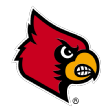
When Louisville took the floor against Duke in the ACC tournament, the Cardinals were projected as possibly the highest or second-highest No. 11 seed in the field. If that projection had value, Chris Mack's men had a cushion of six or seven teams underneath them in the bracket. So, how far does a 14-point loss to the Blue Devils on a neutral floor drop the Cards? You would think the answer to that would be a number smaller than six or seven. The game goes in the books as a Quad 2 loss, not a point of pride, certainly, but not catastrophic, either. Yes, you would think the loss would drop Louisville fewer than six or seven lines. But if the initial projection was off or if a bid thief or two emerges, things could become tense for the Cards just the same.

Reece Beekman made just his ninth 3-pointer of the season in the final second to give Virginia a 72-69 win over Syracuse in the ACC quarterfinals. Beekman's game winner was a true buzzer-beater (release, horn, swish), and the shot significantly increased the probability that Jim Boeheim's men will watch the selection show not knowing whether they're in. A win over the Cavaliers might have given the Orange a margin of comfort, but that's pointless speculation in this post-Beekman world. What we do know is that Syracuse entered the game being shown as one of the last teams in the tournament field by Joe Lunardi. That means any bid thief arising from anywhere in the coming days is bad news for the Orange in particular. Will the committee give an at-large to a 16-9 team with a strong NET ranking (top-40 prior to the loss to UVA) but also with just one Quad 1 win? The safest prediction might be that Syracuse will either be a No. 12 seed or one of the first one or two teams out. No higher or lower.

Yes, you are indeed seeing Duke back in Bubble Watch. Yes, the Blue Devils were recently forced to withdraw from the ACC tournament semifinals due to a positive COVID-19 test within the program. Nevertheless, a source has now told ESPN's Rece Davis that Mike Krzyzewski's team would be available to play in the NCAA tournament. Of course, there is first the small matter of the committee extending a bid to Duke. That appears unlikely, given that the Blue Devils had just played their way into the "next four out" neighborhood when their postseason grounded to a halt. Still, if for some reason the NCAA suddenly finds itself in need of a COVID-19 replacement team or three, Coach K's guys are reportedly available.

Big 12
Locks: Baylor, Oklahoma, West Virginia, Texas, Kansas, Texas Tech, Oklahoma State
Oklahoma State is shown here as a "lock" to make the tournament. OSU is appealing an NCAA ruling that would prohibit the men's basketball team from postseason play. As long as that appeal is still under consideration by the NCAA, this season's team would be allowed to participate in the tournament.

Big East
Locks: Villanova, Creighton, Connecticut, Georgetown
Work to do

The Musketeers were being shown as literally the last team in the field of 68 when they lost in overtime to Butler in the first round of the Big East tournament. As for the Bulldogs, they took the floor at Madison Square Garden at No. 117 in the NET rankings, making this a Quad 3 loss for Travis Steele's team. In other words, barring only the most unexpected spasm of committee wackiness in recent memory, Xavier's at-large hopes are dead. Steele has apparently come to the same conclusion and is reportedly seeking to schedule more basketball between now and Selection Sunday. That's a tight time window to hit, but the Musketeers appear to have been preparing for just such an eventuality. In fact, school authorities have told the local media in Cincinnati that they've been considering this scenario for weeks. Stay tuned.

It was going to be difficult in any event for Seton Hall to make the jump from "first four out" into the projected field by defeating Big East No. 8 seed Georgetown and then losing in the conference tournament title game. Anyway, the Hoyas derailed that plan by beating the Pirates 66-58 in the semifinals. Kevin Willard's men stand before the committee at 14-13, with a seven-point road win at Connecticut serving as this profile's best selling point. That game was played, however, when James Bouknight was absent from the UConn lineup due to injury. Once the Hall ended the regular season with four straight losses, its best shot at playing in the NCAA tournament was likely to capture the automatic bid. Now the odds are slim that the Pirates will receive good news on Selection Sunday.

Big Ten
Locks: Michigan, Ohio State, Illinois, Iowa, Wisconsin, Purdue, Rutgers
Should be in
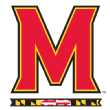
Michigan coach Juwan Howard was ejected after a salty confrontation between the two benches, but Maryland still lost 79-66 in the Big Ten tournament's opening quarterfinal. The defeat drops the Terrapins to 16-13 heading into Selection Sunday. Included among those victories, of course, are wins at Illinois, Wisconsin and Rutgers, as well as one on a neutral floor against Michigan State in the Big Ten second round. The losses, on the other hand, include a season sweep at the hands of Penn State. Add it all up, throw in a NET ranking in the very solid 30s, and the conventional wisdom states that the Terps have a No. 11 seed in their near future.

The Spartans should be fine despite ending their season with a 68-57 loss to Maryland in the second round of the Big Ten tournament. Tom Izzo's team had already built its reputation as a late-season wonder with profile-defining wins in East Lansing over Ohio State, Illinois and Michigan. So, yes, the Spartans can feel secure as they take their seats for the selection show. The other side of that coin, however, is that this is a 15-12 team that will likely have the lowest NET ranking (in the high 60s or even low 70s) of any at-large selection. The Spartans are headed for a double-digit seed, and it's conceivable the number next to their name in the bracket could be a 12.

Pac-12
Work to do
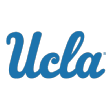
Few Bubble Watch teams have roamed the landscape of possibilities with the same vigor as the Bruins. For much of February, it appeared that Mick Cronin's team was poised to become a lock. That didn't happen, but UCLA was still in contention for the Pac-12 title until the later stages of the regular season. That didn't happen either, and now, after losing to Oregon State in overtime in the Pac-12 quarterfinals, the Bruins find themselves bumped down to "Work to do." To be clear, UCLA is a prohibitive favorite to hear its name called on Selection Sunday. Still, it now looks as though there might be a No. 11 appearing next to that name in the bracket.

SEC
Locks: Alabama, Arkansas, Tennessee, Missouri, Florida, LSU
Work to do
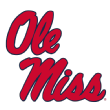
The Rebels weren't showing up as part of the field in mock brackets when they lost by three to LSU in the SEC quarterfinals. In fact, at no point in the past month has Ole Miss been a consensus pick to earn an at-large bid. In the wake of a loss to the Tigers, is there any reason to believe this dynamic will shift in favor of the Rebels between now and Selection Sunday? Not really, no, but there is this: Ole Miss might not need much of a push to get into the field of 68. This is a group that was envisioned as one of the first one or two teams on the wrong side of the cut line. Among the bubble teams that have fallen by the wayside during Champ Week, at least the Rebels and Syracuse both lost to at-large-quality opponents. At 16-11, Ole Miss swept Missouri and beat Tennessee. Add it all up, and the Rebels will likely fall short, but quite possibly not by much.

American
Locks: Houston
Work to do

Will Wichita State receive an at-large bid? When the Shockers lost 60-59 to Cincinnati, Isaac Brown's men were projected as possibly the third No. 11 seed in the field. If that was correct, it means that, prior to the loss, Wichita State had a cushion of about five teams beneath its position in the bracket. Would losing to the NET's No. 119 opponent drop a team five spots on the S-curve? It could, especially if one or two projected No. 12 seeds make strong moves up the bracket. Then again, we have no way of knowing, of course, if the Shockers really were a No. 11 seed in the committee's eyes prior to the loss. One prudent forecast would therefore be that if Wichita State does hear its name called, it might be as a First Four team.

If there were any doubts regarding the strength of Penny Hardaway's team, those questions were answered when the Tigers took Houston down to the last possession of a game twice in six days. Unfortunately for Memphis, however, both those games were losses. The Tigers therefore arrive at Selection Sunday with a 16-8 record. A 20-point blowout win at home over Wichita State in January qualifies as this profile's best win, and the Shockers are no sure thing to make the tournament, either. One win over the Cougars might well have closed the deal for Memphis, but UH went 2-0. The Tigers appear to have fallen just short.

Mock brackets have been carrying SMU as a "next four out" member ever since the team went on a COVID-19 pause in early February. The placement on the bubble made sense for a group with a NET ranking in the 50s and for a team that, at a minimum, opened the season with one of the better interior defenses in the country. While the "best" win on this resume was either a road victory at Dayton or one at home against Memphis, resume metrics like strength of record confirmed that a team recording the wins and losses that Southern Methodist did against this schedule is indeed at-large material. There may have been an opening had the Mustangs made a run in the league tournament. Instead, SMU recorded just its second Quad 3 loss of the season in the American quarterfinals. Both defeats were inflicted by Cincinnati. The dream of an NCAA bid appears to have ended for the Mustangs.

Others
Locks: Gonzaga, BYU, Loyola Chicago, San Diego State, St. Bonaventure
Should be in

Despite a loss to St. Bonaventure in the Atlantic 10 title game, VCU is projected to be as safe as can be. The Rams are showing up in mock brackets as a potential No. 10 or, at worst, No. 11 seed. Bones Hyland appears to be fully recovered from the foot injury that sidelined him for two games, and he rang up 18 points (on 11-of-12 shooting at the line) in a losing cause against the Bonnies. With its ability to force opposing offenses to commit turnovers, VCU can definitely pose a problem for an unsuspecting No. 7 or No. 6 seed.
Work to do

The Bulldogs were being projected as one of the last three teams in the field at the final horn of their loss to Loyola Chicago in the Missouri Valley tournament title game. There is zero profile damage incurred in losing to a NET top-20 opponent such as the Ramblers on a neutral floor, so for the sake of discussion, say that Drake is still one of the last three teams in the theoretical field. There's a good deal of basketball to be played between now and Selection Sunday, and Drake can earn an at-large bid if "first four out" teams fail to climb higher in the bracket. The Bulldogs do have one win over Loyola in three tries, a NET ranking in the top 50 and a 25-4 overall record. It's going to be a close call for the committee, and the Bulldogs will quite rightly worry about each bid thief and every strong run by another bubble team.

The John Wooden-like streak in the Mountain West tournament finally came to an end for Craig Smith when Utah State lost 68-57 in the title game to San Diego State. Prior to that defeat, Smith carried a career 8-0 record in the MWC tournament. It's possible the coach's most important victory in that string was the eighth and final one. When the Aggies defeated Colorado State in the semifinals, the two teams appeared to swap spots in mock brackets. USU rose above the cut line and took its position as a No. 12 seed. It's possible that losing to a team as good as the Aztecs won't change that position. Assuming a bid thief doesn't get in the way, Utah State could be looking at an at-large bid.

The Rams' 12-point loss to Utah State pushed them out of the projected field and into "first four out" territory. On the very brink of Selection Sunday, CSU now must watch and hope. It was an abrupt shift in fortune for a team that had split the season series with USU (with both games coming on the road). Maybe the committee will look at the one win against the Aggies and another at San Diego State and say this team deserves a bid. It could happen, and it will be close either way,

Look who's insinuating themselves into the center of this discussion once again. One week and a lifetime ago, the Billikens lost to St. Bonaventure by 18 in the Atlantic 10 semifinals. Since that time, however, several competing bubble teams have failed to put themselves convincingly into the field. As a result, SLU in recent days has appeared to climb in mock brackets by virtue of inactivity. When you're not playing, you are, in a sense, going undefeated, and Travis Ford's group has made its way back onto many "first four out" lists. The Billikens' top-50 NET ranking and Quad 1 wins over LSU and the Bonnies might be getting another look during the most important weekend of the year.

Leon Rice's group was projected as one of the last teams in the field when it lost to Nevada by seven in the Mountain West quarterfinals. It was a sudden exit for a team that not so long ago seemed to be charting a very different trajectory. With a win over BYU to its credit, Boise State was seen as a No. 9 seed in early February. After a 13-1 start, however, BSU went 5-7 the rest of the way, a closing stretch that included four straight losses to end the season. The defeat at home to Fresno State in the regular-season finale now looks particularly damaging. If there's a sliver of hope for the Broncos it's that their loss was part of a larger wave of defeats impacting the likes of Syracuse, Xavier, Drake and Saint Louis. The committee does have to get to 68 somehow.
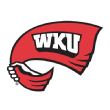
When last we checked in with the Hilltoppers, they had swung and missed on their custom-scheduled opportunity to boost their profile: Rick Stanbury's team booked a road date at Houston and lost by 24. A home loss to Old Dominion followed eight days later, and that one-two sequence ended WKU's at-large hopes, right? In any normal March, sure. The thing about this March, however, is that bubble teams have lost early and often. So while it would still be a very, very big stretch for the Hilltoppers to earn an at-large bid, the Michigan State example is at least intriguing. The fact that (we think) the Spartans are about to get in for sure with a 70-something NET ranking makes it less slightly preposterous to think the committee could reach down into the 80s for a profile featuring a win at Alabama.
